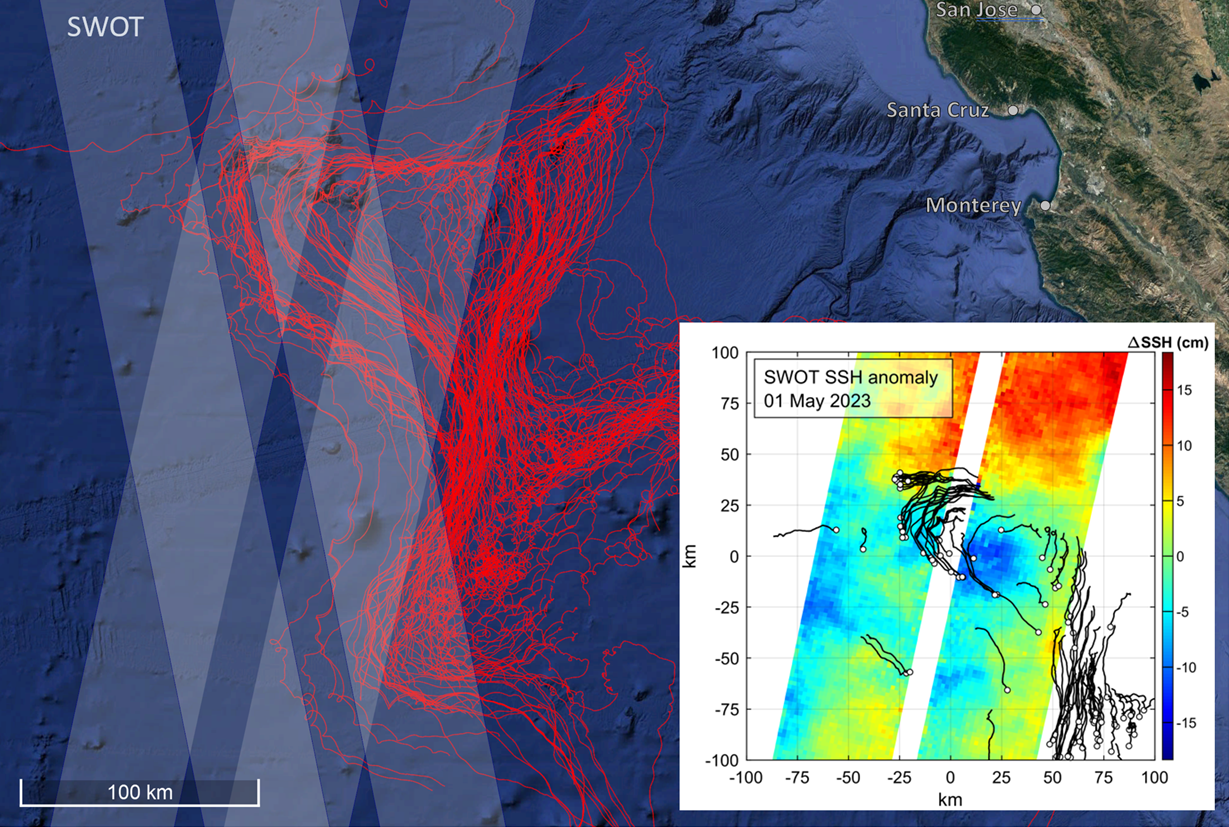Documents
Ocean Surface Dynamics Unveiled with SWOT-Drifter Synergy
Principle Investigator: Andrey Shcherbina (Applied Physics Laboratory, University of Washington)
The SWOT mission enables unprecedented resolution and coverage of dynamic ocean topography, but new challenges arise along with new opportunities. SWOT will observe smaller scales of ocean physics, at which the dynamic balance becomes more nuanced, and the contribution of unbalanced dynamics, e.g., waves and instabilities, increases. Our understanding of the interplay among these small-scale dynamics and their manifestation in sea surface height measurements is lagging due to difficulties resolving the relevant terms in the equations of motion using existing in-situ observations. Enhancing this understanding is crucial to harness the full potential of SWOT.
This project explores an innovative approach to resolving the equations of motion using water-following (Lagrangian) observations taken by satellite-tracked surface drifters. Lagrangian analysis, integrated with SWOT sea surface height observations, allows for efficient and comprehensive characterization of the dominant surface dynamics. Large quantities of drifter observations are available for this study, including over 1,000 drifters currently operating within the Global Drifter Program array, and more than 100 deployed during the NASA S-MODE experiment. Notably, the latter deployment occurred during the SWOT fast-sampling phase in early 2023, in close proximity to one of the designated SWOT “crossover” CalVal sites. This convergence presents a rare and valuable opportunity for close synergy between satellite and in-situ observations.
In collaboration with the SWOT science team, this study aims to address four main objectives:
- Conduct a comprehensive study of surface dynamics using concurrent SWOT and drifter observations.
- Diagnose the relative contributions of balanced (geostrophic and ageostrophic) and unbalanced (inertia-gravity waves, instabilities) dynamics to surface topography variability.
- Assess the performance of deriving balanced surface currents from SWOT surface topography at different spatial scales.
- Explore and develop algorithms for operational synthesis of SWOT and drifter observations to improve surface current determination.
Our project builds upon pioneering studies of Lagrangian dynamics in several recent field experiments, including the NASA Submesoscale Ocean Dynamics Experiment (S-MODE). A distinguishing feature of this project is the synergy between the novel and experimental SWOT products and novel Lagrangian analysis techniques, which would be facilitated by the collaborative environment of the SWOT Science Team.

